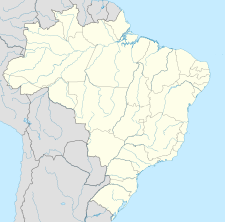|
Amanasaurus
Amanasaurus (meaning "rain lizard") is a genus of silesaurid dinosauriform from the Late Triassic Santa Maria Supersequence of Rio Grande do Sul, Brazil. The genus contains a single species, A. nesbitti, known from two partial femora.[1] Discovery and naming The Amanasaurus holotype specimen, CAPPA/UFSM 0374, was discovered in the Hyperodapedon Assemblage Zone of the Santa Maria Supersequence (Candelária Sequence) of the Paraná Basin, dated to the late Carnian stage of the Late Triassic. It consists of a proximal right femur. CAPPA/UFSM 0375, a distal left femur belonging to a larger individual from the same locality, was also referred to Amanasaurus.[1] In 2023, Müller & Garcia described Amanasaurus nesbitti as a new genus and species of silesaurid based on these remains. The generic name, "Amanasaurus", combines the Tupi word "amana", meaning "rain", with the Greek "saurus", meaning "lizard", in reference to the Carnian pluvial episode. The specific name, "nesbitti", honors North American paleontologist Sterling J. Nesbitt.[1] ClassificationMüller & Garcia (2023) recovered Amanasaurus as the sister taxon to Ignotosaurus and Silesaurus. Similar to a number of recent studies, these taxa, along with other "traditional" silesaurids, are treated as a paraphyletic grade of ornithischians. The results of their phylogenetic analyses are shown in the cladogram below:[1]
References
|
||||||||||||||||||||||||||||




